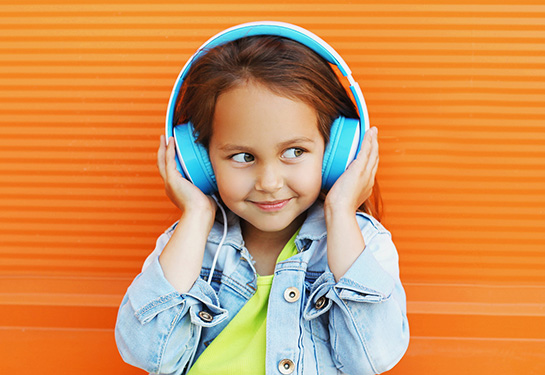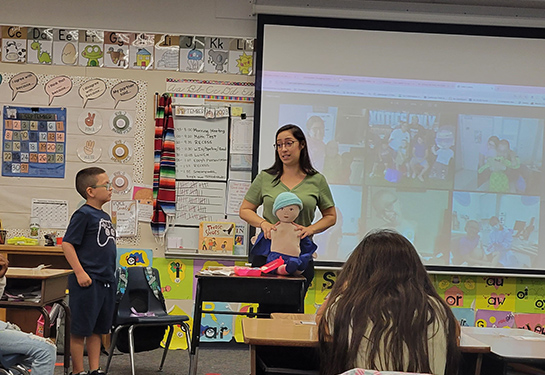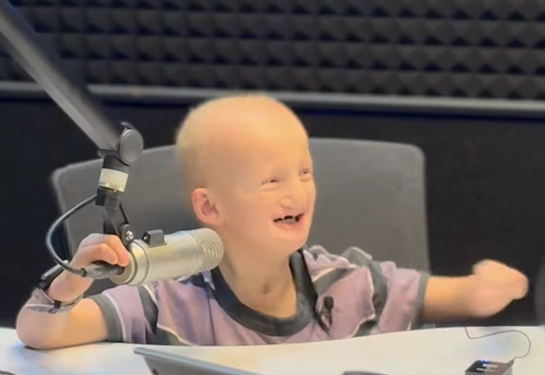Are your child’s headphones causing permanent damage?
A UC Davis Health pediatrician has the do’s and don’ts of personal listening devices
Children and teens often use earbuds and headphones to listen to music, watch videos or talk to their friends. But these personal listening devices put them at greater risk for hearing damage if turned up too loudly.
A study from the Centers for Disease Control and Prevention highlights the issue. Researchers found that 1 in every 6 to 8 middle and high school students (ages 12–19 years) had measurable hearing loss that is likely resulting from excessive noise exposure.
We asked UC Davis Health pediatrician Lena van der List how to protect children’s hearing when using personal hearing devices, going to concerts or just spending time at home.
What can parents do to ensure that their child’s personal listening device is not damaging their hearing?
One rule of thumb is that your children should be able to hear what you are saying at an arm’s length away when they are using earbuds or headphones. If they can’t hear you, the volume is too loud.
Another good rule is that audio players should only be turned up to about 60% of the maximum volume. Try not to exceed this and take a break after an hour of listening with earbuds or headphones.
Parents are important role models for children, so practice what you preach and use earbuds and headphones safely.
Are there particular features that we should look for when shopping for personal listening devices?
One good feature is noise cancelling options. With noise canceling options, children do not need to turn the volume up as much to decrease outside noise. A good fit is also important to prevent sound leakage and reduce the need to turn up the volume.
What about headphones or other products that are labelled ‘Kid Safe’?
These can appear appealing, but let’s look at what this actually means. The World Health Organization and the International Telecommunication Union recommend children listen to devices at no higher than 75 decibels for no longer than 40 hours a week. However, many products marketed as ‘Kid Safe’ do not limit the volume to 75 decibels.
Should we be concerned about regular environmental noise?
For noise generating devices at home, parents can turn down the volume on TVs, computers or radios, or turn these off, if they are not in use. Parents may be able to create a quiet room at home, a noise sanctuary without noise generating devices.
Some children may be extremely sensitive to noise. For example, some children with autism, sensory processing disorders or attention-deficit/hyperactivity disorder (ADHD) may be bothered by sounds that usually don’t disturb other children. Noise-cancelling headphones, hearing protection earmuffs or white noise machines can be helpful for these children.
One note of caution about the white noise machines is that they can produce harmful noise levels on their own, so these generally should be placed far away from the child’s head and used for a short time only.
Do you have recommendations for kids who will be attending concerts and live events?
Many parents are familiar with temporary damage from noise exposure, such as ringing in the ears for a day or so after being at a loud concert. This can also happen after attending a sporting event or sometimes even loud parties. Earplugs or earmuffs can help protect children’s hearing in these noisy environments. Keeping a distance from speakers or other emitters of noise can also decrease the noise level. If you or your child is experiencing ringing in the ears or ear pain because of the noise, that’s a sign that the ears need a break. It’s best to leave early to limit further damage.
When should children be screened for their hearing?
Many parents may be familiar with the hearing screens that are routine at birth. Formal hearing screens are usually done in the hospital before babies go home. That’s because early diagnosis of hearing loss is so important. Hearing problems at birth can lead to developmental problems including understanding language and producing clear speech.
Outside of the newborn period, hearing loss may be acquired. That’s why the American Academy of Pediatrics recommends hearing screens at:
- Ages 4, 5, 6, 8, 10
- 11-14 years of age
- 15-17 years of age
- 18-21 years of age
Additional screenings may be recommended if children have any risk factors that may put them at increased risk for hearing issues including:
- Family history of hereditary childhood hearing loss
- Craniofacial anomalies
- Inner ear malformations
- Bacterial meningitis
- Persistent pulmonary hypertension
Hearing screenings are straightforward; the patient puts on headphones and listens to a series of beeps at different pitches. If you have any concerns about your child’s hearing, ask your child’s doctor to screen them, even if it is outside the usual screening ages.
Related links




